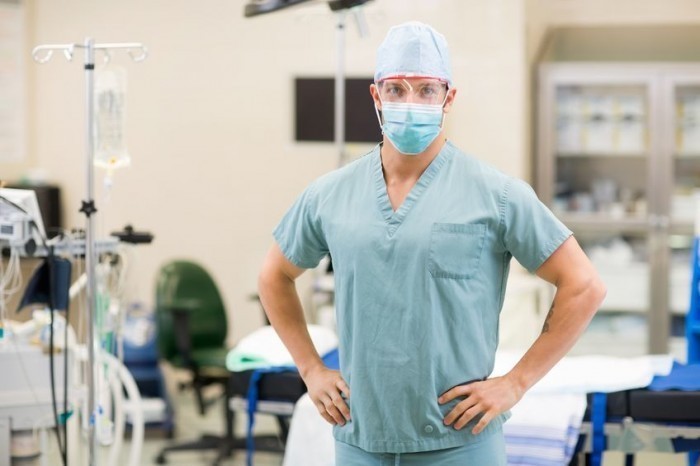BREAKING: Clearview, Tennessee. After seeing the widespread success of Invisalign braces for orthodontists and their patients, orthopedic surgeons have joined the party. Clearview Hospital is paving the way as the first to provide Orthopedic Invisalign. Since its adoption, Orthopedic Invisalign has been all the rage, making waves of change in the world of orthopedics.
But what does Invisalign look like for orthopedists? After reduction of the fracture, small bumps, or contact points, are placed over strategic points on the bones. A series of invisible aligners are placed over these contact points, gently molding bones back into their natural state over time, with new aligners replacing old aligners while the contact points stay the same. Instead of traditional thick, heavy metal, the hardware is made of a mere gossamer of plastic – and barely even visible.
Dr. Dar Jihswoosh, a resident at Clearview Hospital, thinks Orthopedic Invisalign a godsend. “It’s exactly the same size and shape as the normal hardware, but it gets rid of all those visible metal rods and bolts. When I would see the metal ones, I’d get triggered, and have to suppress this urge to immediately find the nearest free piece of metal and pump out some bench presses or curls. But now that I can’t see any metal, it really helps me control these compulsions.”
“It wasn’t always smooth sailing,” says Dr. Wally Cawlbulman, chair of Clearview’s orthopedics department. “Because the hardware is invisible, everyone kept breaking it – patients’ visitors, nurses, X-ray techs, interns, my ex-wife, you name it. It led to several revisions in the OR. But over time, people got used to it. Now, we are proud to be the clear choice for Orthopedic Invisalign. At Clearview Hospital, we value transparency, in as many ways possible.”
Patients, though, have been skeptical of Orthopedic Invisalign. “They complain to us, demanding that we ‘do something and fix it already,’” says Dr. Cawlbulman. “Constantly, we re-explain, saying the equipment to reset their bones is already there, it’s just invisible. But they don’t believe us, furiously try to move, and inadvertently destroy all of it. Only after hearing everything fall apart and seeing their bones resurface do they believe us.”
However, patient follow-up visits have drastically increased. “When we leave the hospital, they only give us enough aligners to get us through two weeks,” says Mr. Gib Jobeyan, a patient who was recently treated with Orthopedic Invisalign. “It forces me to come back and see my surgeon, even though I don’t want to, because I need to pick up my next set of aligners.” For Clearview Hospital, these frequent touchpoints have improved patient outcomes. But for patients like Mr. Jobeyan, “it just really sucks.”
The future for Orthopedic Invisalign is clear. As more providers adopt this new technology, it will surely mold great research and improvements. As we see where Orthopedic Invisalign takes us, Gomerblog will be here to report, promoting the visibility of this game-changing technology.







